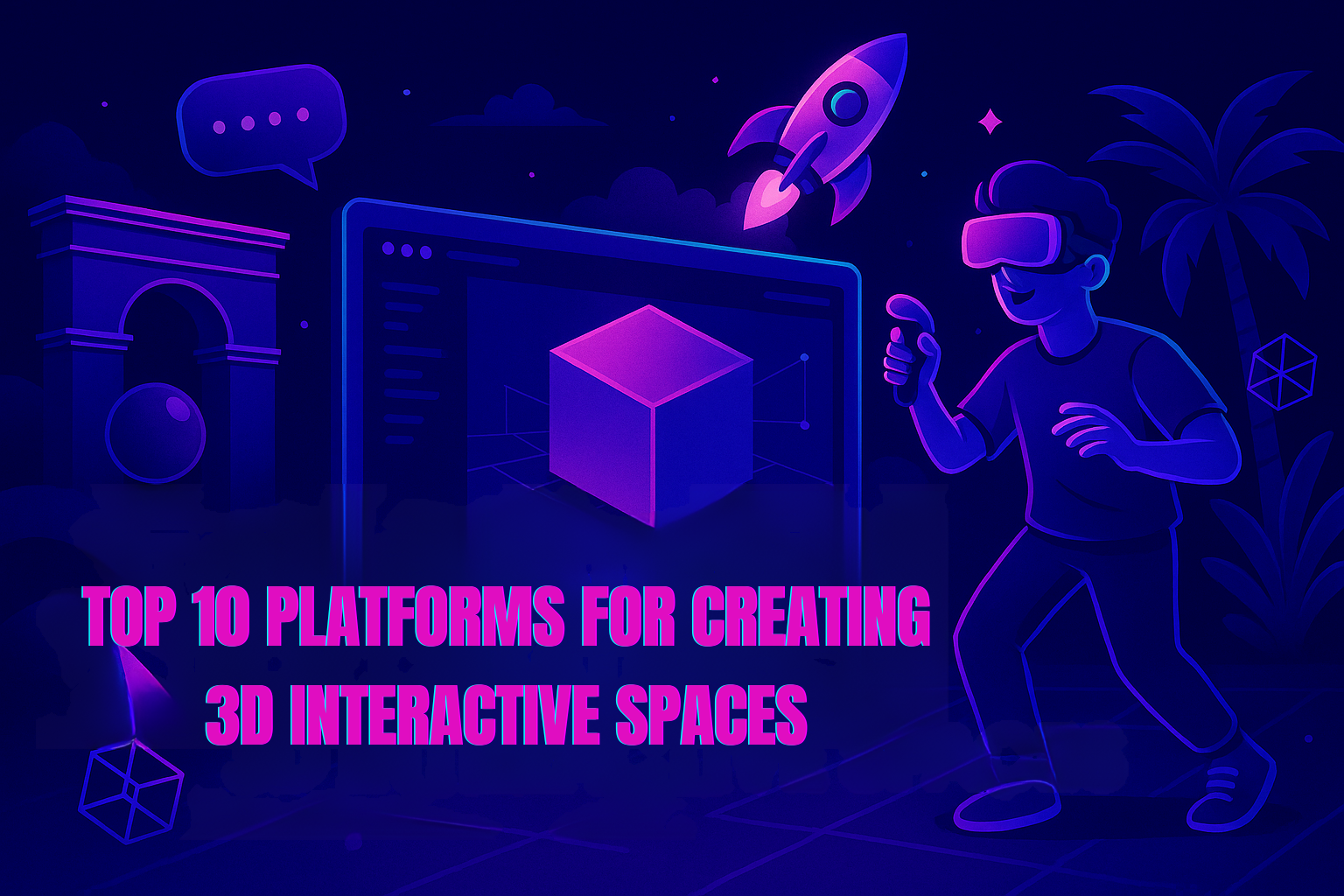
Whether it’s for gaming, virtual events, education, or digital showrooms, 3D interactive spaces have become the new frontier for user engagement. These virtual environments offer immersive experiences that allow users to explore, interact, and even co-create—often in real time.
If you’re looking to build your own virtual world, you’re in the right place. This article highlights 10 of the best platforms for creating 3D environments, covering what they do best, who they’re for, and how they can help bring your project to life.
What Are Virtual 3D Environment Creators?
At their core, virtual 3D environment creators are tools that allow users to build, customize, and interact with digital spaces in three dimensions. From complex gaming worlds to simple interactive showrooms, these tools give creators the ability to develop rich user experiences without starting from scratch.
Features often include drag-and-drop interfaces, real-time collaboration, customizable avatars, and support for VR or AR integration. Some tools are code-free, while others offer advanced scripting options for full control.
Top 10 Platforms for Creating 3D Interactive Spaces
1. Unity
Unity is a leading game development engine, but it’s also widely used for creating virtual environments in industries like architecture, healthcare, and education.
Key Features:
-
Real-time rendering
-
Extensive asset library
-
Support for VR/AR
-
Cross-platform deployment
Best For: Game developers, simulation designers, educational apps
Real-World Insight: Used by brands like Volkswagen and NASA to build immersive training and simulation tools.
2. Unreal Engine
Known for its stunning visual fidelity, Unreal Engine is a go-to platform for creating high-end 3D spaces and virtual environments.
Key Features:
-
Photorealistic graphics with Lumen and Nanite
-
Built-in visual scripting (Blueprint)
-
Multiplayer support
-
Vast community plugins
Best For:Architectural visualization, virtual production, high-end gaming
Real-World Insight:Unreal powers virtual sets in shows like The Mandalorian and real estate walkthroughs for luxury properties.
3. Mozilla Hubs
A browser-based platform that allows users to create and join virtual rooms without downloads or complex setup.
Key Features:
-
No-code interface
-
Web-based, works on all devices
-
Real-time collaboration
-
Open-source
Best For: Virtual meetups, online classrooms, events
Real-World Insight: Popular among universities for creating virtual campuses and collaborative classrooms.
4. Spatial
Spatial allows creators to build 3D interactive galleries, stores, and events with a focus on NFTs, design, and collaboration.
Key Features:
-
User-friendly builder
-
VR and AR compatibility
-
Social and collaborative tools
-
Custom avatars
Best For: Creative professionals, NFT showcases, digital showrooms
Real-World Insight: Used by artists and designers to host interactive portfolio exhibits.
5. Virbela
Virbela is tailored for remote work, training, and virtual events, offering fully customizable 3D campuses.
Key Features:
-
Enterprise-focused features
-
Avatars and voice chat
-
Private virtual offices
-
Large-scale event support
Best For: Remote teams, virtual conferences, corporate training
Real-World Insight: Used by companies like PwC and Deloitte for remote collaboration.
6. Roblox Studio
While best known as a gaming platform, Roblox Studio offers powerful tools for building and publishing user-generated 3D spaces.
Key Features:
-
Lua scripting
-
Massive community and marketplace
-
Monetization options
-
Supports multiplayer
Best For: Game creators, young developers, social virtual worlds
Real-World Insight: Many indie developers have built careers by launching games on Roblox.
7. AltspaceVR
AltspaceVR enables users to create VR-focused social environments, ideal for meetups and community events.
Key Features:
-
VR-native
-
Event hosting tools
-
Avatar customization
-
Support for live audio/video
Best For: VR communities, social events, live talks
Real-World Insight: Used by TEDx and meditation groups to host sessions in virtual reality.
8. Open Simulator
Open Simulator (or Open Sim) is an open-source platform that mimics the functionality of Second Life, letting users create persistent 3D virtual worlds.
Key Features:
-
Highly customizable
-
Scripting with LSL
-
Server hosting flexibility
-
Large community
Best For: Developers and educators needing custom virtual worlds
Real-World Insight: Used by academic institutions for virtual campus simulations.
9. Blender (with add-ons like Blend4Web or Verge3D)
Blender is a 3D design tool that, when combined with interactive frameworks, becomes a powerful engine for virtual space creation.
Key Features:
-
Advanced modeling and animation
-
Free and open-source
-
Export to WebGL or VR
-
Highly extensible
Best For: 3D artists, developers building custom experiences
Real-World Insight: Used in creating interactive product demos and 3D presentations for the web.
10. Enklu
Enklu focuses on augmented reality (AR) and mixed reality experiences, allowing real-time collaboration in spatial design.
Key Features:
-
Real-time spatial editing
-
Cross-device deployment (AR headsets, browsers)
-
Cloud-based authoring
-
Analytics and user tracking
Best For: Retail, museums, AR storytelling
Real-World Insight: Used in immersive retail campaigns and museum exhibits with AR overlays.
How to Choose the Right Platform for Your 3D Project
Choosing the right platform depends on your goals. If you want high-end visual quality and full control, Unreal or Unity are top picks. If ease of use and accessibility matter more, Mozilla Hubs or Spatial offer quicker results.
For education and training, Virbela or OpenSimulator provide structured environments. And if you’re working in the AR space, Enklu gives you powerful tools to create interactive physical-digital blends.
Consider these questions:
-
Do you need VR or AR support?
-
Is real-time collaboration important?
-
Do you need coding flexibility or a no-code approach?
-
Will your space be public, private, or commercial?
Conclusion: Bringing Your Virtual Vision to Life
The tools for building 3D spaces are more accessible and versatile than ever. Whether you’re an indie creator, educator, brand, or developer, there’s a platform that fits your needs.
These virtual 3D environment creators not only help you design digital spaces—they empower you to create immersive, memorable experiences. Pick a platform that matches your vision, test it out, and start building. The virtual world is waiting.